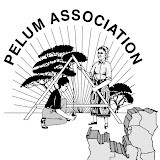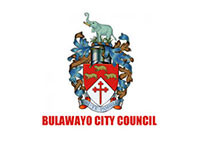
FARMERS in Shurugwi South, in the Midlands province, are benefiting from a Participatory Ecological Land Use Management Association (Pelum)-led land regeneration and livestock management initiative to teach farmers to better utilise their property for agricultural purposes.
Pelum is a Uganda-based organisation that operates across the continent to support small-scale farmers in developing sustainable livelihoods.
Locally, Pelum Zimbabwe is spearheading the initiative as part of its Holistic Land Use and Livestock Regeneration Programme, which aims to restore degraded grazing lands, promote sustainable livestock management and ensure farmers maximise returns from their land.
“The impact of land regeneration extends beyond just farming. Many Zimbabweans consume meat without knowing how it was produced or the chemicals used in conventional livestock farming,” Pelum Zimbabwe programmes officer Farirai Jemwa told NewsDay Farming in an interview.
“With regenerative land use, consumers are guaranteed clean, sustainably sourced meat that promotes better health.”
She added that prioritising land regeneration is helping farmers restore ecosystems, improve soil fertility and secure long-term agricultural sustainability.
“This approach is a game changer, proving that economic viability and environmental conservation can go hand in hand,” Jemwa said.
Before this intervention, farmers struggled to profit from livestock farming due to poor grazing land management.
- Shurugwi farmers benefit from Pelum Zimbabwe land initiative
- Call for women inclusion in agroecology
- Reviving organic agriculture, indigenous cuisine in Zim
Keep Reading
Cattle were often undernourished, making them less valuable in the market.
Overgrazing and unstructured grazing depleted pastures, leaving farmers with little to no feed for their animals.
To address this, farmers adopted paddock grazing, a system where grazing areas are rotated to allow grass to regenerate naturally.
This has transformed the land, ensuring year-round feed availability and thus healthier, more marketable, cattle.
Farmers have also established fodder gardens, growing high nutrition feed that is processed into silage, ensuring livestock remain well fed even during the dry season when natural pastures are scarce.
Beyond paddock grazing, communities have embraced communal herding, where families group their livestock and take turns managing them.
Njeremoto Biodiversity Institute chairperson Winston Mufiri said land regeneration practices reduced grazing pressures.
“Previously, cattle roamed freely, leading to overgrazing and land degradation,” he said.
“Now, grazing pressure is reduced, pastures recover faster and we are seeing healthier livestock.”
This collective approach not only prevents overgrazing, but also frees up time for farmers to focus on other income generating activities, further improving their livelihoods.
A key milestone of this initiative is the newly established livestock marketing centre, which is helping farmers sell their cattle at competitive prices.
“Before, we had to sell to middlemen at very low prices. Now, with the livestock marketing point, we now have control over pricing and can get better value for our livestock,” local farmer Munyika Pachavo said.
He added that improved land management had created a balanced ecosystem in the village, ensuring consistent grazing areas and healthier cattle.
Pachavo noted that higher earnings from cattle sales enabled him to invest in better livestock breeds and expand his farming operations.
While the auction system has opened new opportunities, challenges remain.
Banga Chieftainship chairman Alford Mfiri acknowledged that the sales had been slow due to livestock disease outbreaks, particularly foot and mouth disease.
“There have only been a few sales since the launch, but as farmers continue to restock and maintain better pasture management, we expect business to pick up,” he said.
Before the market, farmers had to travel up to 40km to sell their cattle, often accepting low prices out of necessity.
Now, they can sell closer to home at fairer prices.
Currently, cattle at the auction sell for between US$500 and US$700 per beast, depending on breed and quality.
With the continued adoption of sustainable grazing practices, these earnings are expected to rise.
“This approach is proving that agriculture can be both profitable and environmentally sustainable. Farmers are seeing economic success while restoring the land, and that’s the future we envision,” Mfiri said.
As Zimbabwe continues to grow its herd, it becomes crucial to integrate sustainable practices that balance profitability with environmental stewardship.
This holistic approach not only boosts cattle farming profits but also preserves the land, offering a replicable model for other communities seeking to achieve similar sustainable growth.






